Whether you are an ambitious first-time homeowner or are seeking a new adventure, deciding to build your own home is exciting, but is also accompanied by tough decisions. From your new home’s location to its exterior and interior design, to the final cosmetic touches, there is a lot to consider. To be considered, one of the largest is the very building blocks of the home itself — the foundation, and where your home’s creation truly begins.
Concrete Foundations
A concrete foundation is an essential part of any building, vital to a home’s overall value and safety. When it comes to building your own home and home’s foundation, deciding upon which type of concrete foundation to utilize is a critical first step. This normally comes down to slab-on-grade foundation versus basement foundation. Understanding the key benefits and disadvantages of both foundation types is crucial.
Slab-On-Grade
Slab-on-grade foundation is described as a single layer of concrete poured generally all at once onto a bed of crushed gravel which serves to improve drainage. Wire mesh is cast into the concrete to reduce chances of cracking. This single layer of concrete is poured at ground level, or on grade with your front and backyard, and serves as the base of your basement-less home.
Pros
Is slab-on-grade the way to go? With this simplistic sounding design, there are some definite upsides which come in the form of savings — both time and money. Not only does slab-on-grade foundation require the least possible prep it also comes with an attractive price tag. Foundations serve as a large expense when building a home, however, when labour and supply costs are limited to minor excavation and grading, casting forms for the footers and stem walls, laying down a gravel base, and pouring the final concrete slab, significant savings are realized. In addition to savings, slab-on-grade foundations also eliminate the ability for little critters and pests to take up residence under your home.
Cons
With the benefits of slab-on-grade foundation, however, come several downsides. By design a slab-on-grade foundation enables the ability to place plumbing, phone and internet cables, and electrical wires below the slab surface, keeping these components out of sight and out of mind. While installing these essential pieces of housing infrastructure may be easier with a slab-on-grade foundation due to its flat design, slab-on-grade foundation greatly limits access to these pipes, lines, and cables which can quickly become problematic when issues arise and breaking through the concrete becomes the only option.
In addition to this disadvantage is the realization that building a slab-on-grade foundation is entirely location and environment dependent. When an incline or decline in the natural slope of the land is present, it creates challenges. Additional grading becomes necessary to build up and even out the land prior to creating a foundation, as a slab-on-grade foundation must be poured onto an even, level surface. In terms of environmental concerns, a slab-on-grade foundation offers a home minimal protection from inclement weather, whether it be flooding from even the most modest of rainfalls to cracking from cold climate conditions.
Foundation & Basement
Basement foundations are described as a classic and heavily relied upon home foundation design, utilizing a deeply excavated hole below the frost line, where footings combined with built-up concrete walls allow for an entire level, below ground.
Pros
One very prominent and obvious reason for a basement foundation is the extra space that accompanies it. Creating a basement within your home is a relatively inexpensive way to increases your home’s square footage, which equates to an arguably lower cost than expanding your home in other ways, such as adding onto other existing parts. Whether a basement is used for utility, storage or finished to create an additional living space, creating a foundation and basement poses a number of potential opportunities.
Another advantage lies in flexibility, enabling the ability to build your home on just about any piece of land. With the inclusion of a basement into your home’s building plans, creating a foundation on a sloping grade becomes an option that would not have been possible with a slab-on-grade foundation.
Cons
More space and an increased sense of flexibility, what’s not to like about a basement foundation? For one, the cost. With the construction of a full basement comes the hefty price tag to match. Not only is deeper excavation required, but the cost of a drainage system and proper waterproofing must also be accounted for.
When we further consider a basement, one primary concern, and a phenomenon you may have experienced yourself firsthand, is the presence of moisture within a basement space. Whether it be through an obvious damp musty odour or the sight of water damage, basements have the potential to take on moisture if not waterproofed correctly which we, at Affordable Concrete Service, can attest to.
Conclusion
In weighing the benefits and disadvantages of a slab-on-grade foundation versus basement foundation, which foundation type reigns champion? As far as foundations go, in actuality, there really is no exact winner. Rather, the answer lies in considering a multiple of different factors — from the natural slope of the environment, the climate and house’s location, financial factors, how you intend to utilize your home, and your space needs and requirements.
We at Affordable Concrete Services know firsthand how important selecting the right foundation is for your home. Don’t go at it alone. Schedule a consultation today to let our team of experts be your building partners, guiding your home building project in the right direction.







